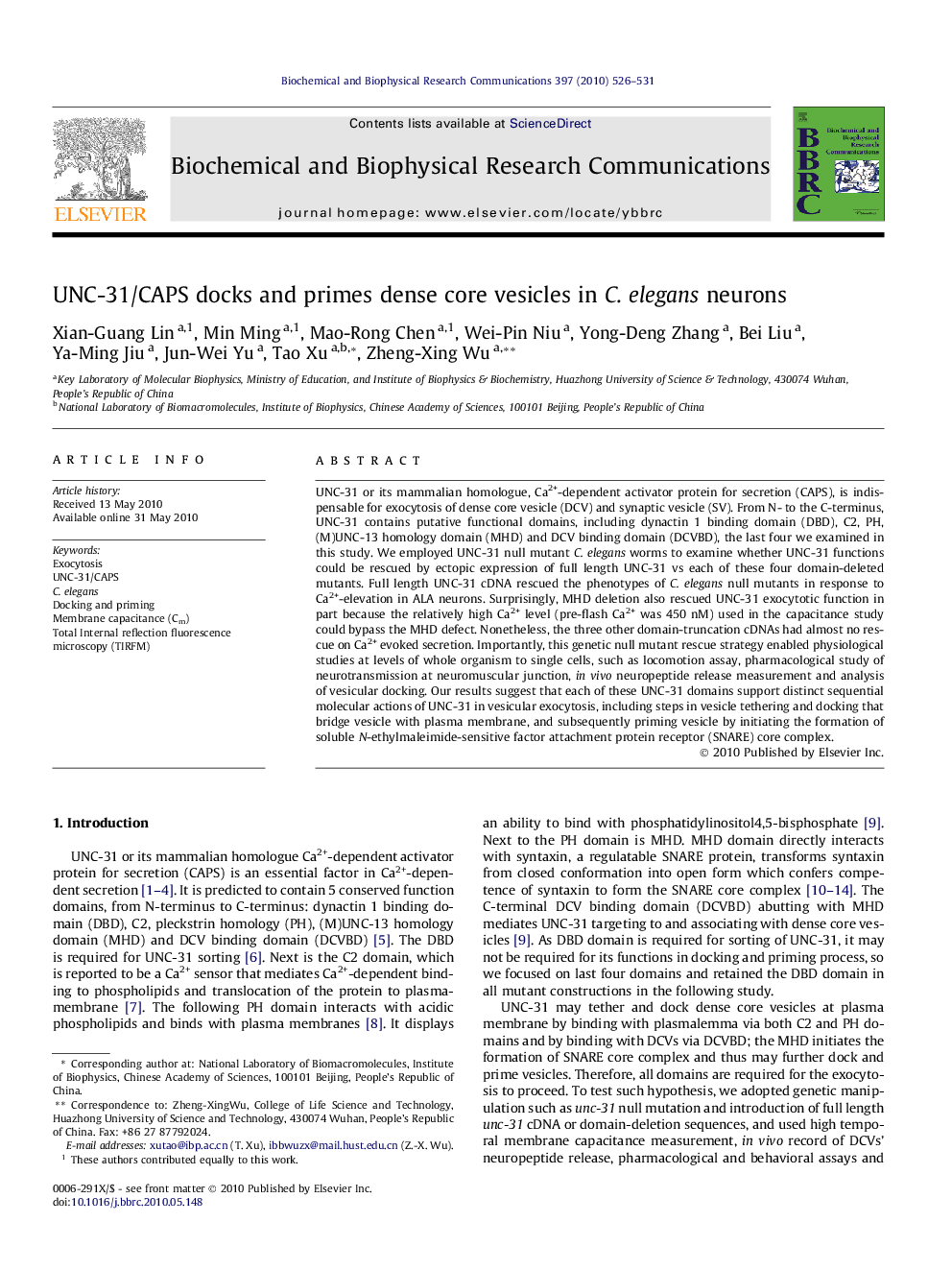| Article ID | Journal | Published Year | Pages | File Type |
|---|---|---|---|---|
| 1931904 | Biochemical and Biophysical Research Communications | 2010 | 6 Pages |
UNC-31 or its mammalian homologue, Ca2+-dependent activator protein for secretion (CAPS), is indispensable for exocytosis of dense core vesicle (DCV) and synaptic vesicle (SV). From N- to the C-terminus, UNC-31 contains putative functional domains, including dynactin 1 binding domain (DBD), C2, PH, (M)UNC-13 homology domain (MHD) and DCV binding domain (DCVBD), the last four we examined in this study. We employed UNC-31 null mutant C. elegans worms to examine whether UNC-31 functions could be rescued by ectopic expression of full length UNC-31 vs each of these four domain-deleted mutants. Full length UNC-31 cDNA rescued the phenotypes of C. elegans null mutants in response to Ca2+-elevation in ALA neurons. Surprisingly, MHD deletion also rescued UNC-31 exocytotic function in part because the relatively high Ca2+ level (pre-flash Ca2+ was 450 nM) used in the capacitance study could bypass the MHD defect. Nonetheless, the three other domain-truncation cDNAs had almost no rescue on Ca2+ evoked secretion. Importantly, this genetic null mutant rescue strategy enabled physiological studies at levels of whole organism to single cells, such as locomotion assay, pharmacological study of neurotransmission at neuromuscular junction, in vivo neuropeptide release measurement and analysis of vesicular docking. Our results suggest that each of these UNC-31 domains support distinct sequential molecular actions of UNC-31 in vesicular exocytosis, including steps in vesicle tethering and docking that bridge vesicle with plasma membrane, and subsequently priming vesicle by initiating the formation of soluble N-ethylmaleimide-sensitive factor attachment protein receptor (SNARE) core complex.
